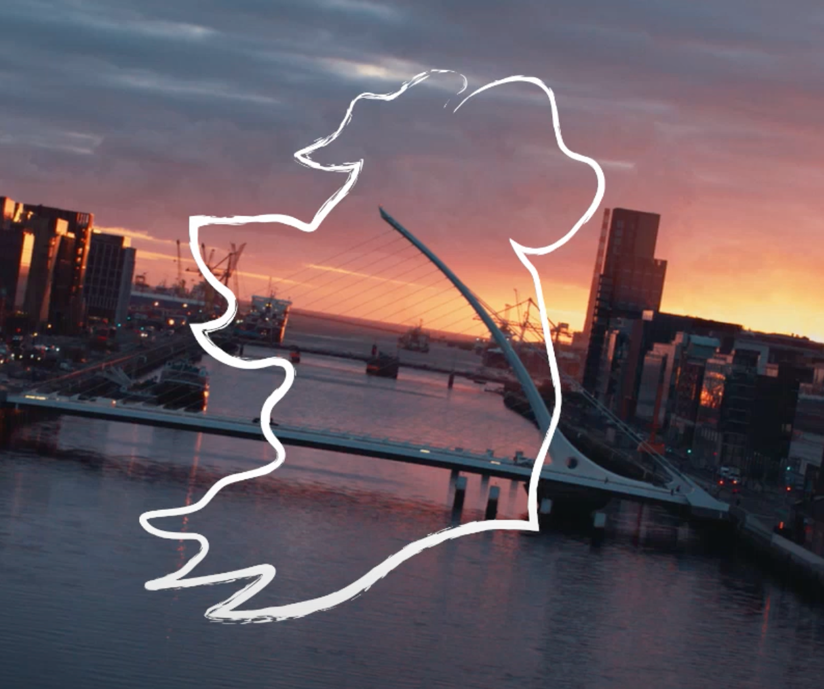
Visiting Howth
Howth Head was famously featured in James Joyce’s ‘Ulysses’, and it’s easy to understand why – the area’s coastal beauty is deserving of praise in prose, poetry, and song.
Starting out as a quaint fishing village, Howth has since expanded into a prominent coastal destination with a bustling fishing harbor. The town, steeped in maritime history, offers a diverse array of attractions. From its charming harbor to its pristine beaches and flower-lined sea cliffs, Howth embodies the essence of a remote west coast village, despite being just a short train ride away from the city center.
Hike/Walks
Great Walks
Setting off from the pretty harbour village of Howth, explore some of Dublin’s most spectacular coastline on a 6km clifftop loop boasting idyllic island and lighthouse views. The delightful Howth – Cliff Path Loop takes two hours to complete and starts from the village DART (train) station.
The trail leads walkers along the charming harbour before climbing away from the village around the Nose of Howth and onto the breathtaking clifftops. The terrain may be rough in parts so walking boots are recommended. The aggregate ascent over this loop is 130m.
Along the way you’ll enjoy stunning views of Lambay Island, Ireland’s Eye and embrace great expanses of Dublin Bay too. The Baily Lighthouse comes into view before you ascend towards the car park at ‘The Summit’ and return to Howth Village along a path running parallel to your outward route.
Our friends at Hidden Howth Experiences offer guided hikes. Take a hike with Mark and dog Missy, see here for more.
Trail details
Type: Walking Trail
Location: Howth
Ascent: 130
Nearest town start: Howth Village
Nearest town finish: Howth Village
Start point: Howth Railway Station
Finish point: Howth Railway Station
Waymarking: Green arrow on white background

Outdoor
Activities
There are plenty of outdoor activities to enjoy in Howth, a picturesque coastal village in Ireland. Take a stroll around Howth village and enjoy the quaint views and surrounding landscapes. You can also go cycling on the scenic coastal roads or relax on the sandy beaches. Deer Park offers a golf course, along with a pitch and putt course suitable for all levels. Whether you’re looking for a leisurely stroll or a more active outdoor adventure, Howth has something for everyone to enjoy in the fresh sea air.

Museums
The National Transport Museum
The National Transport Museum in Howth is a must-visit destination for any transportation enthusiast. Based on the grounds of Howth Castle, this museum boasts an impressive collection of vintage cars, motorcycles, bicycles, and other modes of transport that have played a significant role in Ireland’s history. Visitors can explore exhibits showcasing the evolution of transportation, from early horse-drawn carriages to classic cars from the mid-20th century. The museum also offers interactive displays and educational programs, making it a great destination for families and school groups. Whether you’re interested in automobiles, public transport, or bicycles, the National Transport Museum in Howth offers a fascinating glimpse into Ireland’s transportation heritage.

Eat & Drink
Dine Out
When in Howth, you cannot miss out on the amazing dining and drinking options the coastal town has to offer. With plenty of seafood restaurants serving fresh catches of the day, visitors can indulge in delicious meals overlooking the stunning harbor. Whether it’s enjoying a traditional fish and chips at a local pub, like The Bloody Stream or savoring a gourmet meal at a restaurant like Wrights Findlater there is something for every palate in Howth. And for those looking to wet their whistle, there are numerous bars and pubs serving up a selection of Irish whiskies, craft beers, and refreshing cocktails. With charming settings and friendly atmospheres, dining and drinking in Howth is sure to be a memorable experience for all.

Accommodation
Where to Stay
There are several accommodation options near Howth. Visitors can choose from a range of hotels, guesthouses, and bed and breakfasts, many of which offer stunning views of the surrounding coastline and harbour. Those looking for a more unique experience may opt to stay in one of the charming cottages or self-catering apartments available in the area.
Alternatively, there is plenty of hotels for all budgets in Dublin City Centre, and you can visit us by taking the train.
History of Howth and Howth Harbour
Ireland’s Eye: Ancient Legends
The history of Ireland’s Eye in Howth spans back thousands of years, starting with the hunter-gatherers known as the Tuatha Dé Danann who colonised the area 8,000 years ago. Named Binn Eadair after the moon goddess Danu, the peninsula was revered by the Tuatha Dé Danann, with an important female, Eadair, choosing it as her final resting place. The arrival of the Celts saw a shift in power, with figures like Fionn Mac Cumhail and The Fianna making Howth a hub for hunting, training, and international voyages.
Monastic Settlement
In the 7th Century CE, three holy men established a monastery on the island, giving rise to the church of the sons of Nessan. The Vikings later took control, naming the island Howth and establishing themselves permanently.
Island’s Historical Manuscripts
Over the centuries, changes in ownership and notable events, such as the infamous Kirwan murder, have left their mark on the island’s history. They compiled a manuscript called the Garland of Howth, which contained the four Gospels. This is now on display in Trinity College Dublin, alongside the Book of Kells. And so, the name of the island changed to Inis Mac Nessain, which is what the island is known as to this day in the Irish language.
The Kirwan Murder Mystery
The peace and tranquility of the island was disrupted in 1852, when a young woman was found dead on Ireland’s Eye. A couple, Maria and William, traveled to Ireland’s Eye from Howth and only William returned. Maria’s body was found in the water, leading to suspicion surrounding William. A verdict of ‘found drowned’ was returned, until the state pathologist ordered the exhumation of her body (the first of this nature in Ireland). No water was found in her lungs during the post-mortem, therefore, she couldn’t have drowned after all. Despite a media frenzy and a trial, the truth about Maria’s death remains unclear. The Kirwan murder on Ireland’s Eye remains a notorious and tragic case in Irish history. For more on this, book our Ireland’s Eye Tour to hear our in-depth commentary on the case.
Ireland’s Eye: A Wildlife Haven
Today, Ireland’s Eye remains a bird sanctuary and protected wildlife haven, home to a diverse array of species including seabirds, seals, and marine mammals. Visitors to the island can witness these spectacular creatures firsthand, making it a must-see destination for nature enthusiasts and history buffs alike.
Ancient Charm of Howth
Located on the Northside of Dublin, Howth is a picturesque fishing village rich in history and charm. The history of Howth dates back to ancient times, with archaeological evidence suggesting that the area has been inhabited since at least the Neolithic period.
Origin and Strategic Importance of Howth
The name Howth is believed to have originated from the Old Norse word “Hofuth,” meaning “head” or “promontory,” which is fitting considering the village’s prominent position overlooking Dublin Bay. Howth has a long history of strategic importance, with a defensive fortress known as Howth Castle being built on the headland in the 12th century to protect against Viking raids.
Norman Invasion at Howth Harbour
One of the most significant events in Howth’s history occurred in 1169 when the Normans, led by Richard de Clare (also known as Strongbow), landed at Howth Harbour as part of their campaign to conquer Ireland. This marked the beginning of centuries of English rule in Ireland, with Howth becoming a key port for trade and fishing.
Howth Harbour’s Role in Trade and Tourism
Howth Harbour has played a central role in the village’s history, serving as a bustling hub for fishing, shipping, and tourism. In the 19th century, the construction of a pier and lighthouse at the harbour further enhanced its importance, allowing for larger ships to dock and increasing trade with Dublin and beyond.
Howth Harbour in the Irish War of Independence
During the Irish War of Independence, Howth Harbour was used as a base for the Irish Republican Army to store weapons and supplies, leading to several skirmishes with British forces. The harbour also played a role in the Easter Rising of 1916, with insurgents using it as a landing point for arms shipments.
Modern Howth: History and Tourism
Today, Howth Harbour remains a vibrant and bustling center of activity, with a thriving fishing industry and a popular destination for tourists seeking fresh seafood, stunning coastal walks, and scenic boat tours. The village itself has retained much of its historic charm, with quaint cobblestone streets, traditional pubs, and the iconic Howth Castle overlooking the bay.
Howth’s Rich Maritime Heritage
Howth and Howth Harbour have a long and storied history, from its ancient origins as a Viking settlement to its pivotal role in Irish history and its current status as a thriving fishing village and tourist destination. The village’s rich maritime heritage and picturesque surroundings continue to attract visitors from near and far, making Howth a truly special place on the coast of Ireland.
Explore the wider region
If you’re keen to venture beyond the city limits, Howth is just a short 25-minute journey from Dublin’s bustling center. Dublin itself is a lively capital city, offering an array of unexpected adventures where urban living harmoniously coexists with the great outdoors. This city has a cozy, village-like atmosphere and the warmth of an Irish pub. Surrounded by mountains, with a river running through its heart and a stunning bay in its horizon, Dublin’s charming streets and alleyways are brimming with colorful art, historic architecture, trendy cafes, and classic pubs.
Wondering how to reach us from the airport?
We know planning tours can be a huge undertaking – that’s why we’ve compiled
a set of helpful steps for international visitors travelling from overseas.


